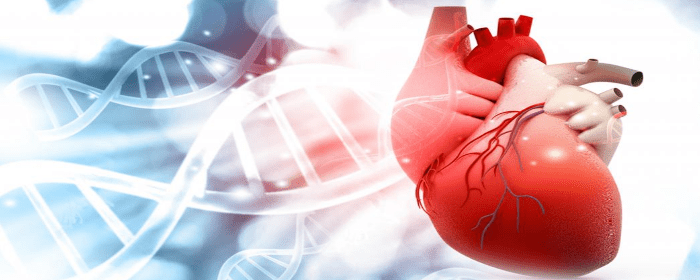
by Stemedix | Feb 15, 2021 | Stem Cell Therapy
The lower back plays a critical role in supporting the body and helping us stay upright. Unfortunately, it’s also one of the areas that experience the most pressure. The lower back clinically referred to as the lumbar spine, is made up of muscles, bone, and other tissue. The tissue, in particular, cushions the spine and protects it from the strain on our back, neck, and shoulders.
The lumbar spine comprises five vertebrae, and in between each is a specific type of soft tissue known as a disc. Large muscles also surround the vertebrae, and facet joints, or bands of connective tissue, are located between the vertebrae. Each part of this tissue network plays an important role in the support and mobility of your spine. They work together, balancing each other.
When an imbalance occurs, the result is often back pain. The source of the pain can be a single cause or a combination of factors. At its core, however, low back pain is almost always caused by the degradation of soft tissue. It’s often most pronounced in the spinal discs and facet joints, which contribute to movement throughout the upper body.
When discs degenerate, the discs collapse, causing the space between vertebrae to narrow. As this happens, the facet joints become strained, causing damage to the surrounding articular cartilage. Once cartilage starts to wear away, bones in the back can rub together, ultimately causing bone spurs.
Previously, there were few treatment options available for chronic lower back pain, all of which had their side effects to consider. While steroid injections offer temporary relief, they’re associated with side effects such as nerve damage. Surgery may be recommended in extreme cases, but back procedures are invasive and can therefore pose risks. Physical therapy can also help patients find relief, but it’s not always enough to help patients eliminate pain and restore mobility.
Fortunately, regenerative therapies such as stem cell treatments are helping patients find noticeable improvements in their symptoms. These treatments have been shown to be safe and effective, and unlike conventional practices, can help to address the soft tissue damage causing back pain.
The process entails acquiring the stem cells from either the patient’s adipose (fat) or bone marrow tissues or by a donated source of umbilical cord tissue. They are then administered directly into the compromised area under fluoroscopic guidance. There, the cells kickstart the body’s natural healing process by self-renewing and transforming into specialized cell types. Stem cells have the ability to heal damaged tissue and restore areas of tissue damage. With this cellular approach to healing, patients can pursue a more effective pain relief strategy than conventional treatments alone will provide. If you are interested then contact a care coordinator today!

by admin | Feb 12, 2021 | Glaucoma, Mesenchymal Stem Cells, Stem Cell Therapy
Glaucoma is a complex group of interrelated eye conditions that affects over 70 million people worldwide. A leading cause of irreversible blindness in people over 60, glaucoma is a progressive condition that affects the optic nerve and leads to gradual loss of specific neurons that relay visual information from the retina to the brain; the progressive vision loss caused by glaucoma is often associated with increased pressure in the eyes[1].
Currently, pharmaceutical and surgical treatment for glaucoma focus on relieving pressure in the eye by treating the trabecular meshwork (TM), the part of the eye that relieves pressure by allowing drainage of the aqueous humor. Unfortunately, to date, these treatment options have demonstrated only to delay, not correct, or prevent, the progression of glaucoma. Additionally, these treatment options are not effective in repopulating or regenerating the retinal ganglion cells (RGCs), the neurons that relay visual information to the brain; in other words, these treatments have proven largely ineffective in patients with advanced stages of glaucoma.
With the advances made in stem cell therapy, and especially considering the functional properties of mesenchymal stem cells (MSCs), several new therapeutic approaches to treating glaucoma-related issues are currently being considered.
In this review article, Harrell et. al drew key observations from the information presented in over 250 journal articles to assess the current knowledge and future perspectives when considering the beneficial effects of MSCs in the treatment of glaucoma.
Specifically, researchers have found that the neurotrophins produced by MSCs encourage both the survival and regeneration of RGCs affected by glaucoma; MSCs appear to support RGCs by generating cells that are similar to RGCs and through promoting the expansion and differentiation of retinal stem cells (RSCs) in RGCs. MSCs are also believed to support the integrity of TM cells, allowing for pressure in the eyes to be reduced.
After reviewing the abstracts of 253 journal articles on the topic, the authors of this review concluded that the large number of studies examining MSCs’ ability to treat and/or protect the eye from the harmful effects of glaucoma was primarily dependent on MSCs capacity to provide neuroprotection for, and support regeneration in, RGCs.
However, as the authors point out, while several of these studies appear to demonstrate the potential benefits of MSCs and their secretome in glaucoma therapy, neither the safety nor efficacy have been validated in clinical settings or clinical trials with the appropriate number of enrolled patients.
While there appear to be several beneficial effects associated with using MSCs and their secretome in glaucoma therapy in humans, the authors conclude that these claims can only be verified if MSC-dependent therapeutic effects are confirmed through future clinical trials.
Source: (n.d.). Therapeutic Potential of Mesenchymal Stem Cells and … – Hindawi from https://www.hindawi.com/journals/sci/2019/7869130/
[1] “Glaucoma – Symptoms and causes – Mayo Clinic.” 23 Oct. 2020, https://www.mayoclinic.org/diseases-conditions/glaucoma/symptoms-causes/syc-20372839.

by admin | Feb 5, 2021 | ALS, Mesenchymal Stem Cells, Stem Cell Research, Stem Cell Therapy
Amyotrophic lateral sclerosis (ALS), also known as motor neuron disease or Lou Gehrig’s disease, is a disease that gradually paralyzes people because the brain is no longer able to communicate with the muscles of the body that we are typically able to move at will[1]; as ALS progresses, people will lose the ability to walk, talk, swallow, and eventually breathe.
While no treatment to prevent or even slow the progression of, ALS currently exists, recent findings indicate that neurotrophic factors (NTFs) have been shown to potentially improve the survival of motor neurons in ALS. While a single administration of NTFs has not been effective in extending the life of these motor neurons, the review suggests the direct delivery of multiple NTFs by transplantation to the CNS has proven effective in animal studies.
Specifically, the observed benefits of mesenchymal stem cells (MSC) transplanted from bone marrow or adipose suggest improved neurological stabilization in patients with ALS. As such, the authors of this review have developed a method that produces a strong synergistic effect when introducing a combined delivery of neurotrophic factors in patients with ALS.
The authors, in this review, report on the safety and clinical effects resulting from phase 1 / 2 and 2a clinical trials in which autologous MSC-NTS cells were transplanted in patients with ALS. Both of these studies were considered open-label proof of concept studies where patients were followed up for 3 months before transplantation and 6 months after receiving MSC-NTS transplantation.
No serious adverse events were associated with MSC-NTF cells intramuscular (IM) injections, intrathecal injections (IT), or a combination of both (IT+IM) during these studies.
Additionally, neurotrophic growth factor secretion of patients’ cells was shown to be induced in the MSC-NTF cells when compared to MSCs of the same patient prior to differentiation. In all samples, MSC-NTF cells demonstrated increased secretion of NTFs when compared to non-differentiated MSCs from the same patient.
As a result of this study, the authors have concluded that IT and IM injections of MSC-NTF cells in patients with ALS are safe and well-tolerated. While not the primary focus of the study, the findings also demonstrated clinically meaningful benefits specifically induced by intrathecal treatment with MSC-NTF cells, including potentially slowing the rate of ALS progression.
Considering that neurologists specializing in the treatment of ALS consider a reduction in ALS-FRS-R slope of 25% or more to be clinically significant, the change in ALS progression rate observed after MSC-NTF cell transplantation in this study may indicate a clinically meaningful effect to be confirmed in future clinical trials.
Source: (n.d.). Safety and Clinical Effects of Mesenchymal Stem Cells Secreting …. Retrieved from https://pubmed.ncbi.nlm.nih.gov/26751635/
[1] “Amyotrophic lateral sclerosis (ALS) – Symptoms and causes – Mayo ….” 6 Aug. 2019, https://www.mayoclinic.org/diseases-conditions/amyotrophic-lateral-sclerosis/symptoms-causes/syc-20354022. Accessed 15 Feb. 2021.

by admin | Jan 8, 2021 | Stem Cell Therapy, Heart Failure, Mesenchymal Stem Cells, Stem Cell Research
After a decade of research, the safety and efficacy of intravenous infusion of bone-marrow-derived stem cells for therapeutic treatment in individuals with heart failure have been well established; however, until Bartolucci et al’s phase 1 / 2 randomized controlled trial of intravenous infusion umbilical cord mesenchymal stem cells (UC-MSCs) on heart disease, no clinical studies have examined the safety and efficacy of similar intravenous infusion of UC-MSCs in patients with chronic systolic heart failure (HFrEF).
Specifically, therapeutic treatment of heart failure with stem cells harvested from bone marrow has demonstrated improved cardiac function and regeneration of damaged heart tissue resulting in moderate clinical benefits in survival, left ventricular function, and improved quality of life in patients with HFrEF.
While MSCs isolated from adult bone marrow have demonstrated benefits, the invasive harvesting procedure and differentiation potential related to donor age and comorbidity associated with BM-MSC present several disadvantages when evaluating for clinical application.
On the other hand, when compared to BM-MSCs, umbilical cord-derived MSCs, or UC-MSCs, are easily attainable, demonstrate less cellular aging, and are not obstructed by potential ethical concerns.
With preclinical research demonstrating UC-MSC supporting enhanced vascular regeneration and cardiomyocyte protection, Bartolucci et al’s study aimed to evaluate the safety and efficacy of intravenous infusion of UC-derived stem cells for therapeutic treatment in individuals with heart failure.
This RIMECARD trial was the first randomized, double-blind, placebo-controlled study of intravenous infusion of allogeneic UC-MSCs in patients with chronic HFrEF. Although there has been limited experience on intravenous administration of MSCs in patients with cardiovascular diseases, it has been well established that MSC-based therapies are considered safe for therapeutic use in this application; further review of prospective clinical trials also did not detect a risk of infusion toxicity, organ system complications, infection, death, or malignancy in treated patients.
The results of the RIMECARD trial demonstrated that delivery of UC-MSCs seems safe for use in the HFrEF population with observable improvements in LVEF in patients receiving intravenous UC-MSC treatments. Researchers have proposed many potential reasons for the clinical benefits of the application of UC-MSCs among patients with heart failure including reduction in myocardial cell apoptosis, less myocardial inflammation and myocardial fibrosis, the formation of new cardiac-related blood vessels, and increased cell differentiation.
One notable observation of this study was the notable cardiomyogenic differentiation potential between UC-MSCs and BM-MSCs. It appeared that BM-MSCs presented a more favorable profile of transcription factors related to cardiac differentiation; however, findings demonstrating poor retention rates after intramyocardial injections of BM-MSCs render them potentially insufficient for what is required to be deemed clinically beneficial.
By comparison, the paracrine factors observed demonstrate a significant advantage of UC-MSCs over BM-MSCs with the most prominent difference being the expression of hepatocyte growth factor in UC-MSCs from all tested donors (BM-MSCs showed low to undetectable levels).
While further analysis and outcomes were considered limited based on small patient sample groups, IV infusion of UC-MSCs was found to be feasible and safe among patients with HFrEF, inducing no humoral immune response among test subjects. While findings suggest significant improvements in left ventricular function, functional status, and quality of life, the impact of UC-MCSs in patients with heart failure would be further supported through larger clinical trials.
Reference: (2017, September 26). Safety and Efficacy of the Intravenous Infusion of Umbilical …. Retrieved December 28, 2020, from https://www.ahajournals.org/doi/10.1161/CIRCRESAHA.117.310712

by admin | Jan 3, 2021 | Stem Cell Therapy, Mesenchymal Stem Cells, Stem Cell Research
Multiple system atrophy (MSA) is a rare, progressively degenerative neurological disorder that affects several of the central nervous system’s involuntary (autonomic) functions, including blood pressure, breathing, bladder function, and motor control.
Similar to Parkinson’s disease in both symptoms and progression, MSA has an average survival time of 7-9 years with no known treatment; the condition is generally characterized by slowed movement, rigidity of the muscles, and loss of balance.
With no effective medical treatment for MSA, current methods of treatment involve those known to reduce or manage symptoms and enhance care. However, with the rapid evolution of therapeutic treatments involving the use of stem cells, new research is exploring this application in the hopes of treating MSA and other degenerative diseases.
Stem cells and specifically adult neural, mesenchymal, and pluripotent stem cells are currently being researched in preclinical and clinical trials.
Examination of neural stem cells found in cerebral ventricles, the hippocampus, and within the striatum of the brain tissues, has revealed them to be self-renewing and have the potential to quickly differentiate. When studied in models using mice, neural stem cells were shown to mitigate into lesions of the brain, proliferate, and differentiate into three distinct types of nerve cells. Considering this, researchers believe neural stem cells to be the ideal donor cell for treating MSA. The biggest drawbacks associated with neural stem cells appear to be the difficulty associated with collecting them from the central nervous system.
Mesenchymal stem cells, or MSCs, found in bone marrow, umbilical cords, and adipose tissue are easy to obtain and have been demonstrated to be self-renewing and differentiate quickly. MSC animal models have also demonstrated improvement in Parkinson’s-associated symptoms, the ability to hinder immuno-inflammatory reactions, and the ability to improve overall cognitive ability – all without additional side effects.
Human umbilical cord blood, or hUCB-MNC, is also a known source of stem cells, and specifically mononuclear cells, which have been found to have high nerve regeneration functionality. In addition, hUCB-MNC are easy to collect, separate, and survive longer than other stem cells. When transplanted into the brain, animal studies have demonstrated hUCB-MNC’s ability to secrete nerve growth factors, repair damaged cells, and protect neurons. Other studies have shown that hUCB-MNC appears effective in treating a variety of nervous system diseases by reducing inflammation and regulating immunity within the central nervous system.
Regardless of the characteristics, benefits, and source of the various stem cells, the treatment appears to rely heavily on the method of transplantation for treating MSA. Specifically, successful transplantation relies on the stem cells’ ability to migrate to the CNS and integrate into tissues.
The lack of progress in developing successful treatment options for MSA has led to examining stem cells’ ability to self-replicate, self-renew, differentiate, and secrete neurotrophic factors as a potential treatment method for MSA and other related neurological diseases. As research evaluating the therapeutic benefits of stem cells progresses, the authors recommend continued monitoring of stem cell safety as well as the degree of survival and integration after transplantation into the human body.
Reference: 2018, October 5). Treatment of multiple system atrophy-the past, present and …. Retrieved January 12, 2021, from https://www.ncbi.nlm.nih.gov/pmc/articles/PMC6261842/

by admin | Dec 29, 2020 | Stem Cell Therapy, Osteoarthritis, Pain Management, Stem Cell Research
As researchers continue to uncover potential health and medical benefits associated with the regenerative properties of stem cells, there is growing interest in the field of stem cell medicine and specifically for use as an alternative therapeutic treatment of pain.
Of particular recent interest in this area is the differentiation ability of stem cells classified as totipotent, pluripotent, and multipotent. Stem cells that can differentiate into and form cells and build organs are known as totipotent stem cells. Pluripotent stem cells are able to differentiate into various types of cells. Multipotent stem cells can differentiate into several limited forms of cells. Of the three different types, only multipotent stem cells are found as adult cells in the body, including in organs, placenta, and bone marrow.
Recently, stem cell transplantation has been used as an alternative treatment for pain associated with severe osteoarthritis, neuropathic pain, and intractable musculoskeletal pain that does not respond to traditional or conventional medication.
Osteoarthritis
Although stem cells are thought to be a potential treatment approach for repairing and regrowing cartilage required for treating severe osteoarthritis, to date, regeneration of damaged cartilage has proven to produce limited results. One of the significant issues associated with using stem cells to regenerate cartilage is that cartilage contains no blood vessels or nerves, making cartilage regenerations very difficult once it is damaged. Making the process even more difficult, cartilage regeneration can only occur when the entire layer of cartilage and the layer of bone directly below the cartilage is damaged.
As such, therapeutic stem cell treatment possibilities for osteoarthritis include individual or combination treatment(s) of surgical intervention, tissue engineering, and intra-articulation injection of cultured stem cells; of these possible treatment options, intra-articulation injection of cultured cell therapy would be the preferred method as it is the least minimally invasive and most convenient for clinical use.
There have been mixed reviews as to the effectiveness of these treatments and, to date, there have been no reliable and convincing clinical human students with a high level of evidence conducted specifically on the efficacy in functional improvements and cartilage repair surrounding the application of intra-articular stem cell injection therapy. Although some who have had this treatment expressed improvements.
Neuropathic Pain
Stem cells have demonstrated the ability to release neurotrophic factors that enhance the growth and survival potential of neurons, secrete anti-neuroinflammatory cytokines, and provides a cellular source for replacing injured neural cells; this makes the application of stem cells a prime option for regulating and potentially even reversing intractable neuropathic pain.
Studies have confirmed that relieving neuropathic pain is possible through the administering of stem cells, both through intravenous injection and when directly administered to a specific injured site. However, while stem cells do not need to make direct contact with injured cells to produce a neuroprotective effect, stem cells applied directly to an injured site, as opposed to those intravenously injected appeared to better target and relieve neuropathic pain associated with a specific area.
In addition, while a further clinical human study is required, animal models of both diabetic neuropathic pain and spinal cord injury demonstrate that stem cell therapy, and specifically mesenchymal stem cells (MSCs), demonstrated improved blood circulation and nerve conduction velocity, reduced pain, and regeneration of the affected nerve.
Intervertebral Disc Disease
Patients diagnosed with degenerative disc disease who were treated with MSCs injected directly into the nucleus pulposus, or inner core of the vertebral disc demonstrated a reduction in pain and disability comparable to spinal fusion surgery.
Research has yet to identify an adequate, effective dosage of stem cells and further research on specific stem cell type, dosage, safety, and implantation rate is required. As research into the use of stem cell therapy in pain medicine progresses, it is important to see the development of evidence-based standardized methods of treatment.
While still in the early stage of clinical application, the use of stem cells in the treatment of pain appears to be very promising.
Reference: (2019, October 1). Stem cell therapy in pain medicine – PubMed. Retrieved December 11, 2020, from https://pubmed.ncbi.nlm.nih.gov/31569916/







 St. Petersburg, Florida
St. Petersburg, Florida
